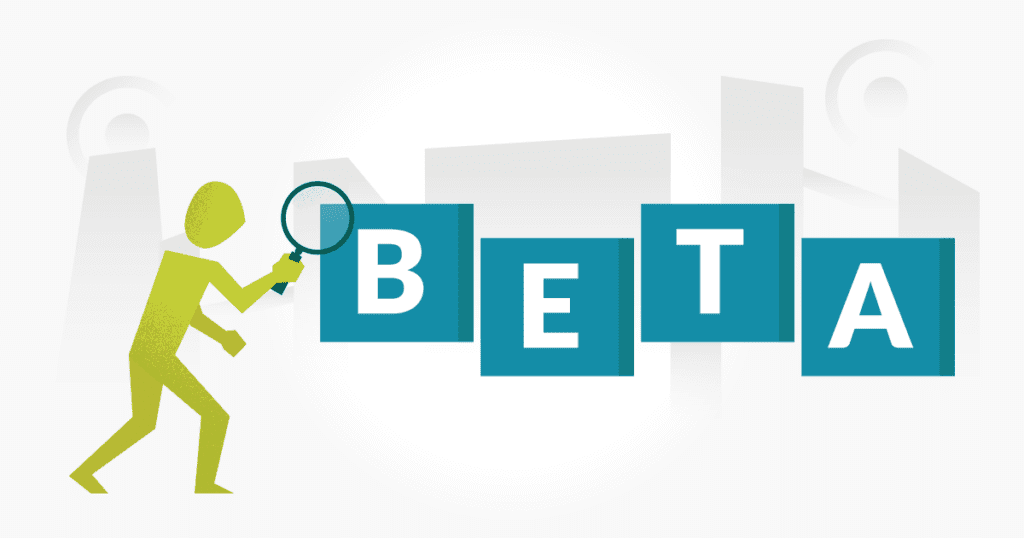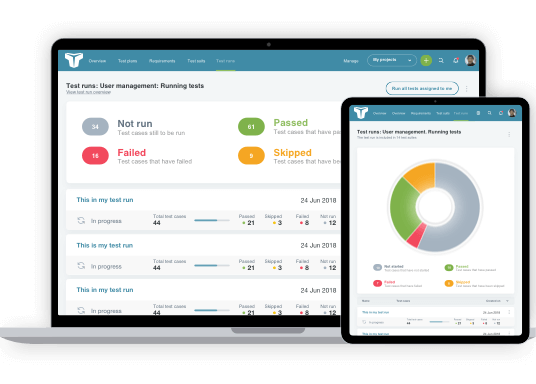Beta testing is a part of the software development process. It’s when a limited number of users get early access to an application so they can provide feedback to the software development team, which helps identify any defects missed from preliminary testing. Software teams can confidently ship higher-quality products by running proper beta testing programs.

What is beta testing?
Beta testing is a type of user acceptance testing (UAT) where a targeted group of users receive access to a product near to sign-off to see how it performs in the real world. Beta testing is one of the final stages after integration and system testing. This type of testing employs black box testing methods. In other words, no internal system or database examinations occur during beta testing. Testing is done only from the perspective of the user.
Beta vs. alpha testing
Unlike its UAT Counterpart, alpha testing, where members of the software development team conduct the tests, beta testing is performed with real users or customers in a real-world environment once alpha testing is complete. The former is regarded as internal UAT testing, while beta testing is external. Alpha testing uses a far smaller group of testers (usually less than 100), whereas beta testing might involve hundreds or even thousands of testers.
Discover more about the difference between beta and alpha testing.
Open vs. closed beta testing
There are two main types of beta testing: open and closed. Open testing has no limit to the number of users who can participate; any user can opt to be a tester. Closed testing requires users to be invited or approved before they can become involved. In both approaches, beta testers are a subset of customers or potential customers.
Why is beta testing necessary?
Improved quality
Beta testing enables bug discoveries that the internal team may have missed. Inviting a diverse group of targeted users to access the application brings a broader range of testing perspectives and use cases which can uncover more defects and areas for improvement.
More satisfied customers
Beta testing improves customer satisfaction in two ways. Firstly, it can resolve further defects. This will allow the product to be shipped into production in a far more reliable and stable state, thus reducing customer frustration because of defects. Second, many customers enjoy being involved because it makes them feel valued. It also connects them with people from the software development team they may not have interacted with otherwise. End-user testing can positively impact your customer relationships, resulting in happier customers.
Risk mitigation
Releasing a flawed product into the market can have long-lasting negative effects on a business. Beta testing extends test coverage and, therefore, decreases the risk of releasing a faulty product into the world. By fixing software issues before the public release, companies avoid poor user experiences, costly rollbacks, post-release bug fixes, and a negative reputation.
Team morale
Beta testing can even boost team morale because engineers communicate with customers. Many users will share positive feedback about the work, and let’s be honest, who doesn’t like to receive positive feedback? It also allows developers and testers to connect with customers, which can help shine a brighter light on the purpose of their job.
Tips for conducting beta testing
- Select a diverse group of qualifying users: It is essential to pick the most suitable candidates for beta access. Users who undertake the field test should be part of your target audience and already know how to use your product in their day-to-day environment. Their experience ensures they will be familiar with the scenarios (tests) they run through.
- Ensure all features are complete: This one might seem obvious, but conducting beta testing on an unfinished product can be a costly error. Only open up beta testing when all features have been shipped to avoid users reporting issues about incomplete work. Their only concern should be to report on poor user experiences and defects, not to spot missing or incomplete features.
- Ensure stability: Before getting started, make sure your platform is stable and doesn’t crash or have other reliability issues. Don’t let this be the first time your application undergoes a significant user load. Perform load testing ahead of time to ensure your product can handle the numbers using it during the real-world test.
- Explain the objectives: Be clear with your beta testers on their goals and objectives. Writing a test plan and then communicating it to your users will ensure everyone is on the same page. It also avoids any ambiguity around expectations.
- Encourage open communication: As previously discussed, beta testing is an excellent opportunity to build customer relations. Fostering honest and transparent communication will ensure your team gets even more valuable feedback. Breaking down the wall between customers and engineers will enable the engineering team to be more empathetic as they build new features in the future.
- Provide regular updates: As defects are found, fix them as soon as possible, especially if they are significant. This rapid-fire feedback loop will reduce the incidence of duplicate reports and show your customers you care about their feedback and product improvements.
- Show beta testers how to log defects: Lastly, tell your beta testers how you want to receive feedback and how to submit bug reports. This can be through the standard support ticketing channels or a dedicated feedback collection system specific to the beta test.
What happens after beta testing?
Once end-user testing is complete, there will be two likely outcomes. Ideally, all significant defects will have been resolved on time so you can ship the software into general availability. Alternatively, important areas for improvement could have been identified that need additional design and development work. Whatever the case, beta testing is scheduled toward the end of the entire testing phase as it prepares your team for the official release.
Conclusion
Beta testing bridges the gap between customers and the engineering team. By allowing a targeted group of users to test your software from new perspectives and use cases, your software engineering team can confidently ship higher-quality products. This process has a net positive result by creating happier customers and more fulfilled employees.

